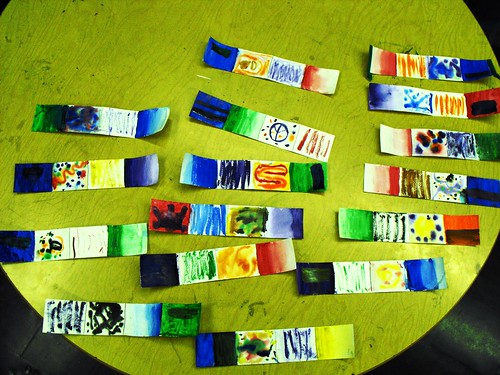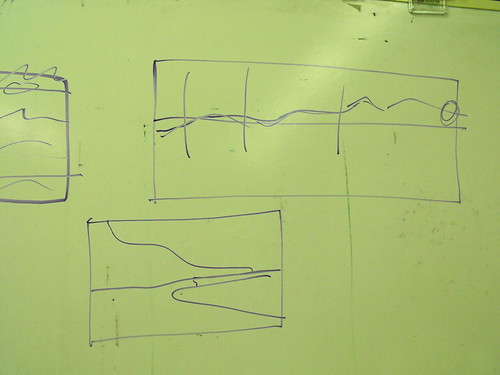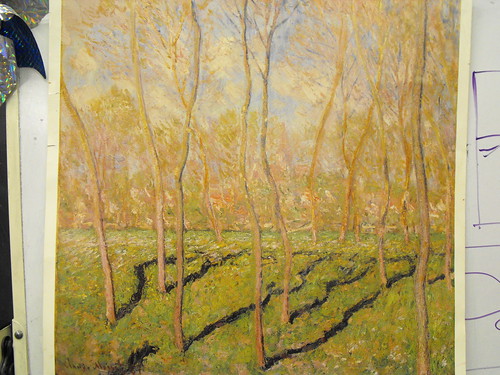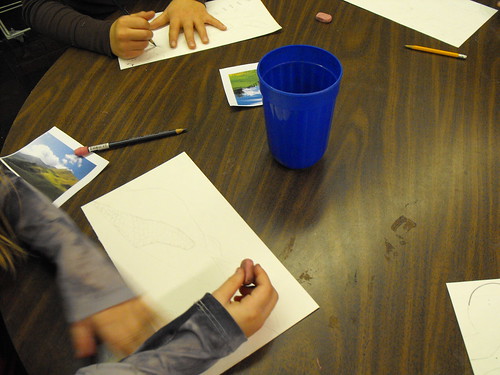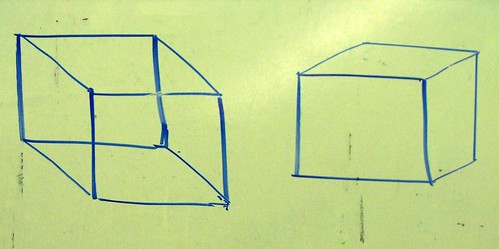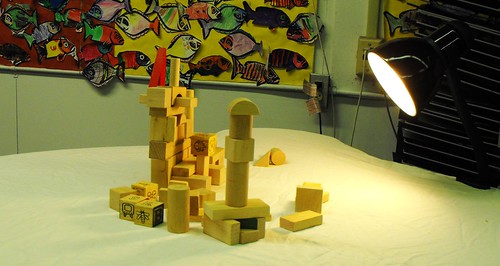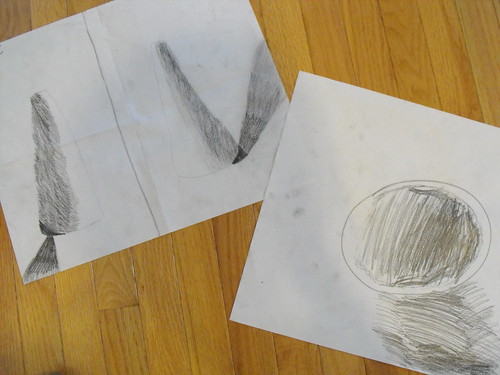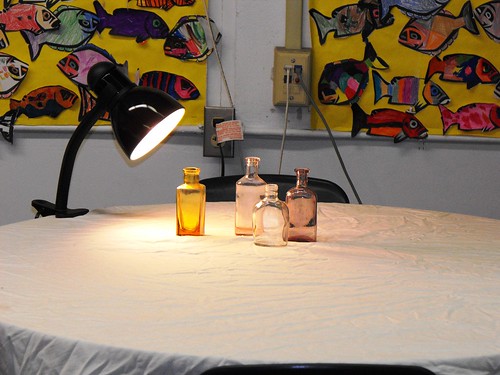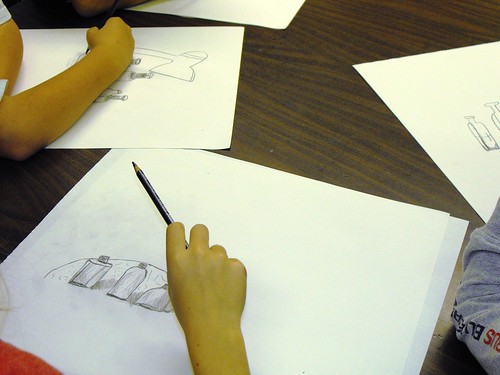
I told the kids that watercolor is different from oils and acrylics, because it's hard to change or go over a color if you aren't happy with it. You sort of get what you put down with watercolor and that's why it's a good idea to take your time and think about where you are putting color and how much color you are putting down.

Also, unlike oils and acrylics which are opaque paints, watercolors are translucent. In other words, if you want white in your painting that means not painting on that part of the painting, as the paper is your "white", as you can see through the paint to the paper below.
The same goes for lighter colors like yellow. If you are painting a green field and there's a bit of yellow in there, it's best to leave the yellow part blank, paint the green, and then go back in and paint the yellow part. If you just paint green and then try to paint yellow over it, you won't end up with a light bright yellow.

Watercolor is challenging and requires some forethought, but the kids seems to be doing a good job of figuring this out.
Here's their progress so far:
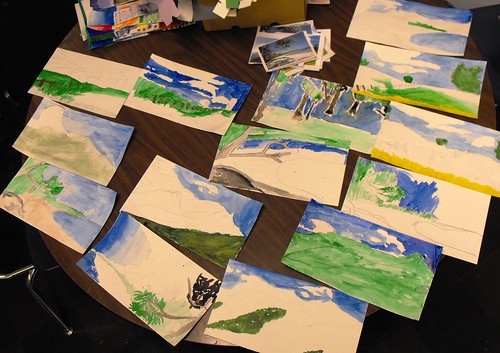
We'll continue to lay in the backgrounds of our landscapes when we meet again after the break. The following week we'll talk about how to paint the more detailed parts of the foreground in our landscapes.
Have a great holiday break and we'll see you in 2010!!
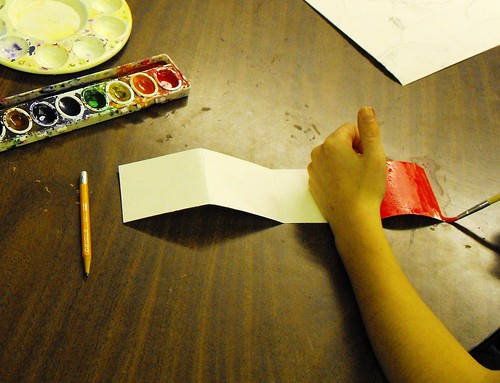 This week, we explored 5 different watercolor techniques.
This week, we explored 5 different watercolor techniques. 
